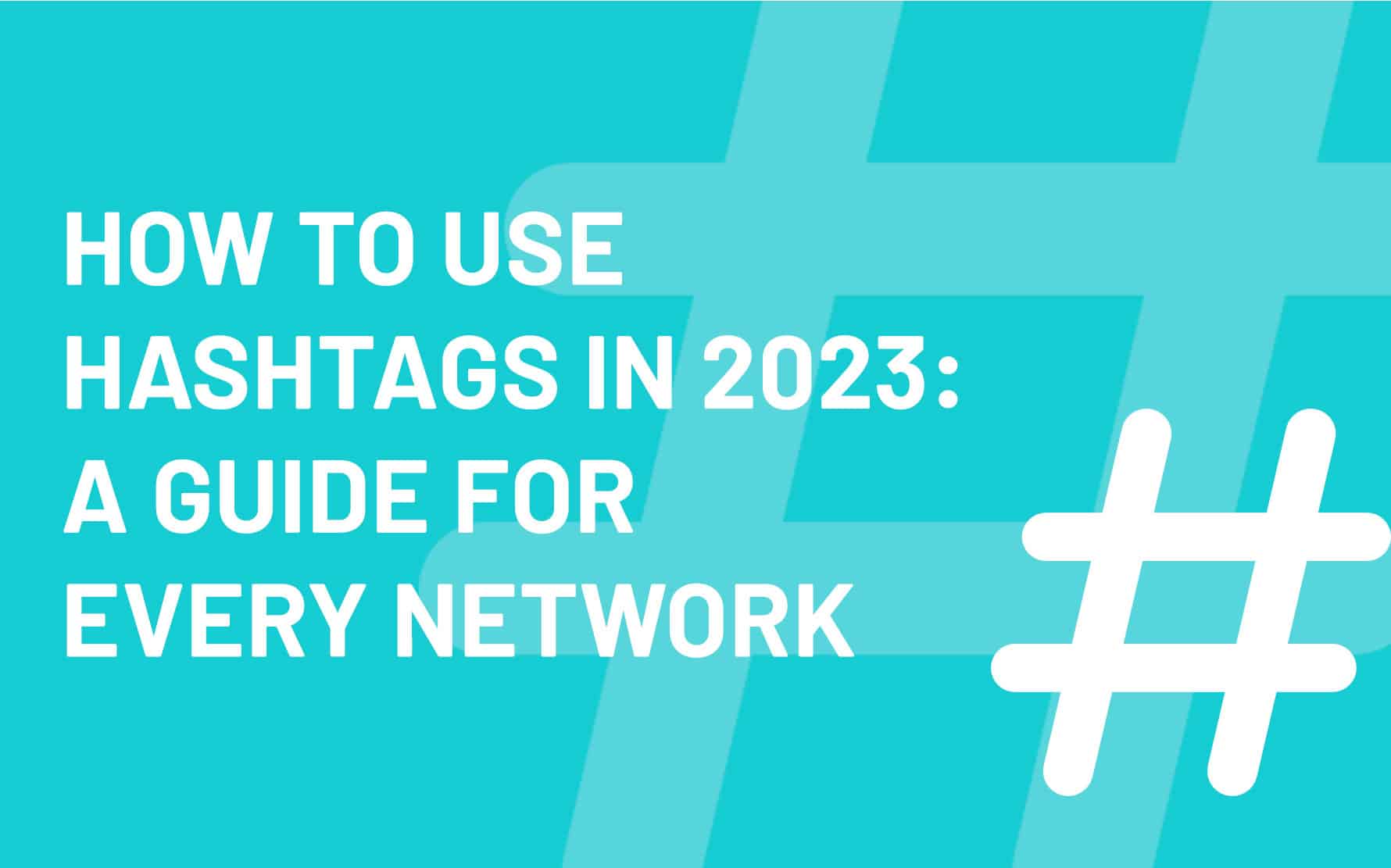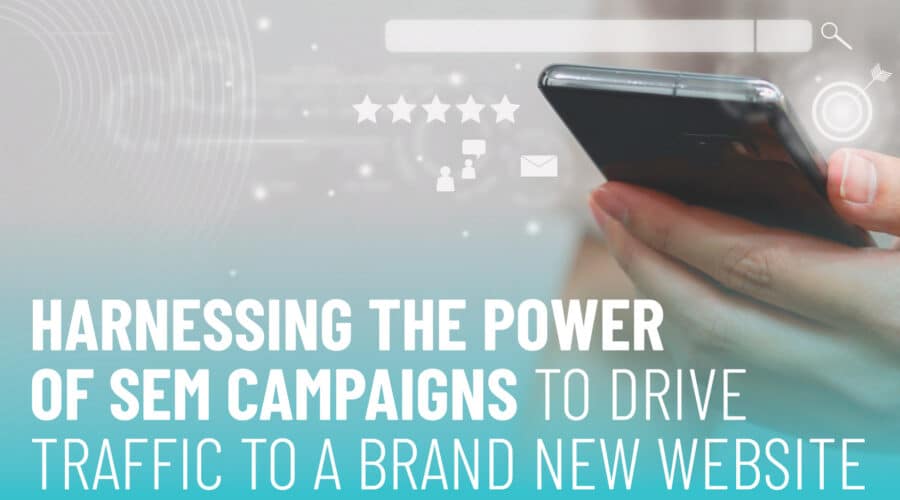Hashtags might be confusing at first, but they’re worth learning. They let you join conversations or content around a certain topic so people with similar interests can find your stuff more easily.
The most popular hashtags on social media are those used to describe videos. On Twitter and Instagram, hashtags are the norm.
If you’re utilizing social media to promote your business, you should use hashtags. Hashtags can aid in increasing the social media presence and engagement of your brand.
Some people believe that the only time you should use hashtags is on social media sites like Instagram for “#ThrowbackThursday” posts. However, this could not be further from the truth! A good social media strategy contains a mixture of popular, relevant, and branded hashtags. By continuing to read this post, you will learn more about utilizing hashtags correctly on social media as well as why they are beneficial in the first place.
You’ll also learn:
- What is the best way to look for relevant hashtags that will help you grow your brand?why
- Using only popular hashtags isn’t the best strategy.
- Essential tips for using hashtags on every social media platform:
What is a hashtag?
The pound symbol on your keyboard — often known as an octothorpe — was originally used to indicate numbers.
In the summer of 2007, Chris Messina developed the hashtag as a means of categorizing tweets and making it easier for users to find specific tweets. That’s when he came up with the concept for Twitter. He proposed that since the platform is so brief,
Hashtags aren’t just for Twitter anymore. Hashtags are useful on a variety of social media platforms, not just Twitter. (For each platform, see below for how to use hashtags.)
Hashtag basics
- Hashtags must always begin with “#” but will not work if there are any spaces, punctuation marks, or symbols in between.
- Keep your accounts open to the public, otherwise people who don’t follow you won’t be able to see what you’re writing.
- Don’t try to make a long phrase. The ideal hashtags are generally brief and simple to recall.
- Use relevant and specific hashtags. If it is too obscure, it will be hard to find and it won’t likely be used by other social media users.
- Limit the number of hashtags you use. More isn’t always better. It actually looks spammy.
Why use hashtags?
Hashtags are an excellent way to connect with others who share your interests, and they can be used for nearly anything. For example, if you own a small business, you could use hashtags to advertise your products or services.
There are many reasons to use hashtags, including raising awareness for a cause or starting a conversation. Hashtags are also a great way to keep up with trends and breaking news. Here are some more reasons you should be using hashtags in your social media strategy:
-They help you connect with like-minded people
-They make it easy for people to find your content
-You can use them to measure the success of your campaigns
Increase engagement with your followers
Including hashtags in your posts helps you engage in a discussion that is already taking place on that social networking site. Most importantly, it makes your postings visible in the conversation. This can lead to greater participation, which will increase your brand’s social media interaction by likes, shares, comments, and new followers.
Build brand awareness with branded hashtags
Creating a branded hashtag is an excellent way to promote your business and get people talking. It can be as easy as using your company name or adding a slogan to a hashtag.
For example, in 2021 JIF Peanut Butter made TikTok history with its branded hashtag #JIFRapChallenge. In the promotional video, famous rapper Ludacris rapped with a mouth full of peanut butter.
The #LudacrisChallenge asked users to create their own Duet with Luda video, using JIF “in their grill.” This challenge saw more than 200,000 impressions and 600 unique videos created.
Show support for social issues
Backing a cause or issue that’s bigger than your brand by using an associated hashtag is one way to get people mobilized.
For example, the most retweeted Tweet of 2021 was posted by K-pop sensations BTS. They used Twitter to spread their #StopAsianHate/#StopAAPIHate message.
Add context to a social media post
On Twitter, you have less room to write a caption than on Instagram. On Instagram, captions that are longer aren’t always the most effective. The same can be said for Facebook, Pinterest, LinkedIn, and any other platform. Sometimes less is more.
Hashtags are simple, yet effective. They help to explain what you’re saying without using up a lot of valuable characters or having to write repetitive captions.
Help your target audience find you
Users can also follow hashtags and other people on LinkedIn and Instagram. Using a few popular hashtags could be another method to assist newcomers discover your business. This is an example of how using #travel on your Instagram photos might result in new followers for you.
Disclose sponsored partnerships
If you are an influencer or work with them, use this section.
When influencers partner with brands, they have to let their followers know that the content is sponsored as per FTC (Federal Trade Commission) guidelines from 2019. If these regulations aren’t followed, then both the parties involved can face heavy punishment through fines.
Influencers: always use hashtags to clearly indicate when a post is sponsored by a brand.
Brands: be sure to look for these hashtags when reviewing and approving influencer content.
The most popular hashtags in 2022
The most popular hashtags aren’t always the best. For example, Instagram’s #followme hashtag has over 575 million postings. Hashtags that request likes do not engage your followers and provide no meaning to your social media post. They’re also awkward to read. You don’t want people thinking you’re spamming them with those kinds of hashtags.
Also, don’t forget to use well-known hashtags. For example, #throwbackthursday or #flashbackfriday are great ways for your company to take part in a social media discussion that’s already happening. As of April 14, 2022, these 10 hashtags were the most popular on Instagram:
- #love (1.835B)
- #instagood (1.150B)
- #fashion (812.7M)
- #photooftheday (797.3M)
- #beautiful (661.0M)
- #art (649.9M)
- #photography (583.1M)
- #happy (578.8M)
- #picoftheday (570.8M)
- #cute (569.1M)
Keep in mind that what counts as a popular hashtag varies from social media platform to social media platform. For example, on LinkedIn, two of the most well-known hashtags are #personaldevelopment and #investing. Even though networking sites contain millions—and sometimes billions—of posts with these types of tags, they’re pretty general. They don’t tend to focus on any one industry or subject matter, which means they likely won’t say much about your brand specifically. A better strategy is identifying niche hashtags thatwould be Manzana more directly related to your company and its values.
How to find the best hashtags to use
In order to discover hashtags that target your customer base, brand, and industry, you will need to conduct some research.
1. Monitor social media influencers and competitors
Begin by conducting a social media competitive analysis. Get knowledge on your rivals and any important influencers in your brand’s niche. Keep track of which hashtags your competitors utilize the most frequently, as well as the number of hashtags they include in each of their posts. This can help you figure out how your rivals are interacting with your common target audience and which keywords they favor using.
2. Know which hashtags are trending
RiteTag is revolutionizing the way we use hashtags on social media. With RiteTag, simply type your caption into the text bar and upload the photo you want to accompany it. From there, RiteTag generates trending hashtag suggestions based on your content which lets you see not only the best hashtags to get immediate visibility for your post but also ones that will keep working over time. And if you want a more detailed look at how effective each hashtag would be, just click “Get Report” for a analysis of all displayed tags.
3. Get a social media listening tool
A social listening tool, such as Hootsuite, allows your brand to use search streams in order to identify which hashtags are the most successful for each social network that you’re utilizing. In other words, search stream make it easy discover popular and useful hashtags.
4. Find related hashtags
After clicking on a hashtag on LinkedIn, you may see additional hashtag recommendations below the hashtag. After clicking the ellipsis, select “Discover more hashtags.”
5. Analyze which hashtags were successful on past posts
Keep track of which hashtags you use on past posts by analyzing which ones have been most popular. If you notice some of your most popular posts always contain a few of the same hashtags, make sure to include those in future content.
How to increase organic reach with hashtags
Hashtags make your post discoverable to those searching that specific tag. For example, if someone is looking for a #weddingplanner and you use that hashtag in one of your posts as a wedding planner, they may come across your post.
You’ll have greater organic reach with hashtags when they are relevant to what you do. Do some research on which tags are most popular within your industry, then start using them frequently in your posts.
Using a stockpile of hashtags that are both relevant and high-performing will improve your posts.
It’s easy to fall into the trap of overusing hashtags. However, Instagram advises that you should only utilize 3-5 tags per post. Our study backs up this assertion, and we even discovered that using too many hashtags may reduce your reach.
How to use hashtags on every network
Here, find simple, easy-to-read tips for using hashtags on different social media platforms.
Twitter hashtags
Optimal number of hashtags to use:
1-2
Where you’ll find hashtags on Twitter:
You can use hashtags in your Tweets anywhere. Use them at the beginning for emphasis, at the end for context, or in the middle of your post to highlight a keyword. Hashtags may also be included in comments Retweeted, replies, and in your Twitter bio. You have additional options as well:
- Type a hashtagged keyword into Twitter’s search bar to find hashtagged content.
- See trending hashtags in Twitter’s trending topics.
A couple essential Twitter hashtag tips:
- Although you’re technically able to use as many hashtags #hashtags #xD in a Tweet as you want up to the 280-character limit, Twitter suggests that users stick to two or less.
- Before you create a new hashtag, do your research to ensure that it is not already in use.
Instagram hashtags
Optimal number of hashtags to use:
3-5
Where you’ll find hashtags on Instagram:
Use hashtags after writing a great Instagram caption. You can also include them in the comments section when engaging with your followers.
You can use up to 10 hashtags in your Instagram Stories, however, they are no longer featured on hashtag pages or shown to users who follow a tag. Although this means thatnew audiences won’t necessarily see your content, you can stilluse themto add context to what you post..
You can also:
- Search hashtags in the Tags tab of Instagram’s Explore section.
- Follow hashtags. That means content from any creator will show in your feed, as long as it includes the hashtag you’re following.
A couple essential Instagram hashtag tips:
- Post your hashtags as the first comment in the post so that people can focus on the fantastic caption you’ve created.
- With an Instagram Business account, you can access Instagram Insights in order to analyze your profile’s performance from hashtags.
- Although adding hashtags in the middle of your captions or comments may make your material less accessible to those utilizing text-to-speech readers, they should not be avoided entirely.
- If you’re unsure about where to place your hashtags, it’s usually best to group them at the end of your caption or in a comment.
Facebook hashtags
Optimal number of hashtags to use:
2-3
Where you’ll find hashtags on Facebook:
Hashtags can be placed anywhere in your post on Facebook, or in the comments section. Hashtags are also a great way to keep track of content and organize posts by theme or topic in private Facebook groups–something that is becoming increasingly popular among businesses.
You can also:
- Type a hashtag into Facebook’s search bar to look for one.
- Click on a hashtag to see a feed of Facebook posts using that same hashtag.
- Search hashtags used in private Facebook groups using the “search this group” bar under the group’s menu.
A couple essential Facebook hashtag tips:
- Because so many users’ profiles are private on Facebook, remember that it’s more challenging for brands to track how users are interacting with your hashtags.
- Monitor your brand’s hashtags and see which public profiles are joining in the conversation by using the URL facebook.com/hashtag/_____. Include the keyword you want to search at the end.
YouTube hashtags
Optimal number of hashtags to use:
3-5
Where you’ll find hashtags on YouTube:
Including a few hashtags in your brand’s YouTube video title or description can be beneficial. By clicking on the hyperlinked hashtag, users can see a feed of other videos that also use that same hashtag. However, don’t use more than 15 hashtags as YouTube may ignore all the hashtags or flag your content as spammy.
A couple essential YouTube hashtag tips:
- Hashtags in titles and descriptions are hyperlinked, so followers can explore more content by clicking on the hashtag.
- If you don’t include hashtags in the title, the first three hashtags in the description will show above the title of your video.
- Type in “#” into the YouTube search bar to find popular tags on YouTube.
LinkedIn hashtags
Optimal number of hashtags to use:
1-5
Where you’ll find hashtags on LinkedIn:
Incorporate hashtags anywhere into your LinkedIn posts.
You can also:
- Search hashtags using the platform’s search bar.
- Hashtags that are currently trending on LinkedIn will appear in the “news and views” section on the home page.
- Get hashtag suggestions from LinkedIn as you write an update.
A couple essential LinkedIn hashtag tips:
- LinkedIn is a professional platform. Keep the use of hashtags professional too.
- Follow hashtags on LinkedIn to see recent posts incorporating that hashtag.
Pinterest hashtags
Optimal number of hashtags to use:
2-5
Where you’ll find hashtags on Pinterest:
As Pinterest is mostly known as a keyword engine, hashtags can give your content an additional boost if used correctly. If you’re wanting to use Pinterest for business purposes, be sure to include appropriate hashtags in both the Pin description and any written descriptions when Repinning. Furthermore, take advantage of Pinterest’s mobile version which provides hashtag suggestions when creating new pins.
A couple essential Pinterest hashtag tips:
- Consider Pinterest to be a search engine. Use hashtags that are searchable, unique, and relevant in order to improve your chances of being found.
- In a Pin description, avoid including more than 20 hashtags.
TikTok hashtags
Optimal number of hashtags to use:
3-5
Where you’ll find hashtags on TikTok:
TikTok has several hashtags, and there are numerous ways to find them in a video’s description or on the Discover page. You can look for trending hashtags on the Discover page and any videos that use them now. The search bar also may be used to discover hashtags that are relevant to you.
A couple of essential TikTok hashtag tips:
- Use a combination of niche and trending hashtags.
- Leave space in captions for your hashtags.
- Launching a branded hashtag campaign is a great way to interact with your target market and improve brand recognition.










